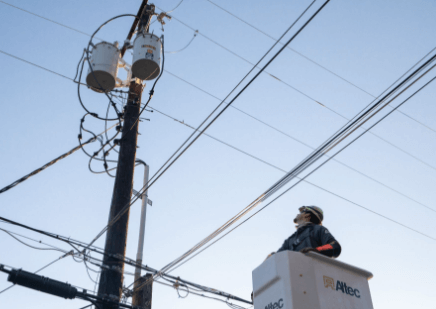The Impact of Energy Deregulation in Texas – A Comprehensive Overview


Since 2002, Texans in deregulated areas could choose their retail electric provider (REP). This change brought a new energy generation and distribution system to break up monopolies and create competition.
Contents [show]
Lower Electricity Rates
Texans have more choices than ever regarding energy providers and plans. Energy deregulation has opened the door to many options, allowing electric companies to compete for customers’ business with innovative electricity rates and unique plan offerings. It has also resulted in lower electricity prices (over time). According to a study by Lloyd Gosselink Rochelle & Townsend, residential customers of deregulated areas pay an average of 17 percent less than their counterparts in non-deregulated markets. Deregulation has also allowed retail energy providers to compete with each other by offering a variety of incentives and rewards programs for their customers. The constant competition keeps pricing competitive and encourages energy companies to innovate. In addition, the fact that customers can choose their provider and switch plans with ease has forced energy companies to improve service continually. This has also helped keep the price of electricity low for Texans. Energy deregulation aimed to break up monopolies, especially in the electricity industry. While it has done that to some extent, it has created new threats to the system and shifted responsibility to unregulated entities.
Enhanced Energy Efficiency
In a market where suppliers can offer numerous plan types, it can take time for consumers to identify options that meet their needs. This is especially true when those plans feature a variety of contract terms, hidden fees, and other pricing gimmicks. The good news is that energy deregulation has created many innovative plan types for Texans, driving competition and providing customers with numerous choices. Homeowners can improve their energy efficiency through simple steps, like improving insulation and sealing leaks. In addition, they can invest in new appliances certified by the Energy Star program. Businesses can also adopt energy efficiency strategies and utilize innovative technologies to monitor and control their energy usage. As a result of energy deregulation in Texas, many wind-powered power plants have been built, and the share of renewable energy in the Texas grid has increased significantly. This has helped reduce emissions and contribute to a cleaner environment. It’s important to remember that while the battle for deregulation began on Sibley’s cocktail napkin, the real push started years before. Enron CEO Ken Lay had been lobbying for the state to deregulate its electricity market since 1996, well ahead of the state’s first failed attempt at restructuring its electric needs. He even wrote a letter to Bush in 1998, days after the governor’s re-election and months before the state’s legislative session.
Increased Competition
Since deregulation began in Texas, consumers have been able to choose their Retail Electricity Provider (REP). This gives them multiple electricity rates and plans that adapt to their lifestyles and budgets. While this offers many opportunities, it can also create confusion. The wide variety of gimmicks, rates, contract terms, hidden fees, and other factors can make it hard for consumers to determine the best options.
This increased competition has also made the state’s energy market more competitive. This has been good for Texans, as it has kept prices lower than they might otherwise be and encouraged investment in efficient new power plants. Before deregulation, the state’s utilities had monopolies on electricity services, which caused prices to rise. The Electric Reliability Council of Texas (ERCOT) now oversees a more financially competitive energy market. ERCOT is responsible for electricity transmission and distribution across the state, including its major cities. It’s important to note that not all areas of the state are deregulated, and residents in these regions continue to be served by municipal utilities. In these cases, customers should contact their local utility if they experience issues with their service. This can help you determine whether your area is deregulated. It also includes a list of all the deregulated cities in Texas.
Increased Renewable Energy
As a result of deregulation, electricity consumers are now able to choose their energy providers. This allows them to shop around for the best deal on their power rates. It also means that if they are dissatisfied with their current provider, they can switch to another without paying any fees. The Electric Reliability Council Of Texas (ERCOT) deregulated the Texan electricity market in 1999. This split the electricity market into three main components: power generators, retailers, and utilities. It also created a system allowing the ERCOT to improve the state’s power grid majorly. These improvements included consolidating ten different control centers, new transmission pricing and interconnection policies, and detailed annual reports identifying energy needs throughout the state. This deregulation model has also created an excellent environment for renewable energy in Texas. The state has become a leader in green power production with its abundant wind and sun. The low cost of wind and solar energy has also made it a priority for many global corporations to invest in new facilities in the state.
The electricity deregulation model covers 85% of Texas. However, some regions still operate with municipally owned utilities or electric cooperatives.





